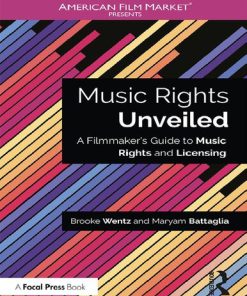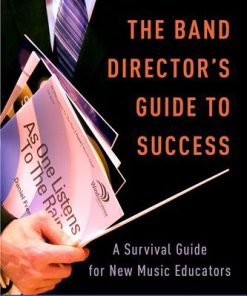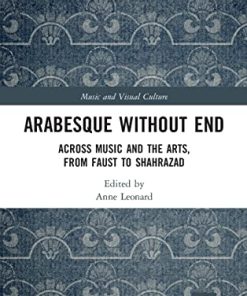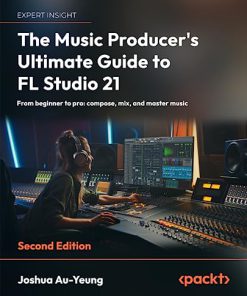Music Techniques Styles Instruments and Practice Britannica’s Practical Guide to the Arts 1st Edition by Russell Kuhtz ISBN 1680483625 9781680483628
$50.00 Original price was: $50.00.$25.00Current price is: $25.00.
Music: Techniques, Styles, Instruments, and Practice Britannica’s Practical Guide to the Arts 1st Edition by Russell Kuhtz – Ebook PDF Instant Download/Delivery: 1680483625, 978-1680483628
Full download Music: Techniques, Styles, Instruments, and Practice Britannica’s Practical Guide to the Arts 1st Edition after payment
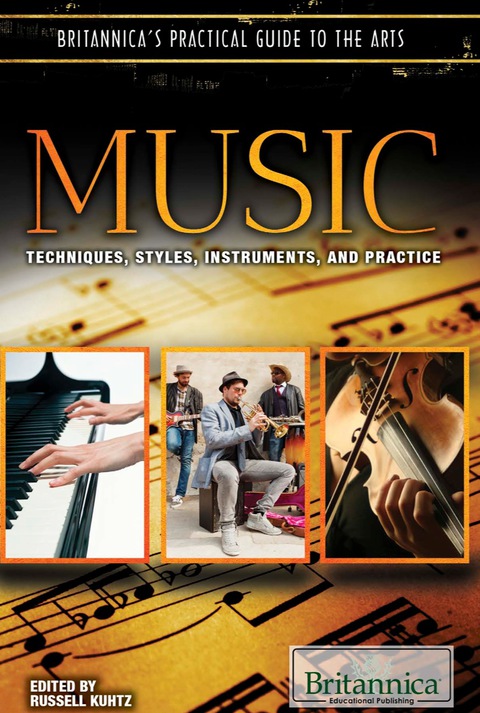
Product details:
ISBN 10: 1680483625
ISBN 13: 978-1680483628
Author: Russell Kuhtz
Music: Techniques, Styles, Instruments, and Practice Britannica’s Practical Guide to the Arts 1st Table of contents:
Chapter One: Music Notation, Sound, and The Structure of Music
-
Music Notation: This section likely explains the system used to write music, which includes staff notation, note values, rests, and clefs. It introduces how music is visually represented, making it readable and reproducible.
-
Musical Sound in Western Music Traditions: Focuses on the elements that contribute to musical sound in Western traditions, such as pitch, timbre, and texture.
-
How Music is Written: Covers the specifics of writing music, including notation for melody, harmony, and rhythm.
-
Duration and Rhythm: This section discusses time signatures, note durations, rests, and rhythmic patterns, which form the backbone of any musical piece.
-
Tempo and Dynamics: Explores the speed of the music (tempo) and the volume (dynamics), which are essential for conveying the emotional expression of a piece.
-
The Structure of Music: Introduces the framework that gives music its organization, including the concepts of phrases, sections, and movements.
-
Melody: Describes the importance of melody in music, which is the main theme or tune in a composition.
-
Major and Minor Scales: A discussion on the difference between major (bright, happy) and minor (somber, sad) scales, which form the basis for tonal music.
-
Harmony: Explains how multiple notes are played together to create harmony, which supports the melody.
-
Diatonic Scales Produce Tonality: Focuses on the use of the seven-note diatonic scale (e.g., C major) and how it creates a tonal center in music.
-
Common Scale Types: Outlines other scales used in Western music, such as pentatonic, chromatic, and whole-tone scales.
-
Other Scales: Introduces non-Western or alternative scales that exist beyond the common practice in Western music.
Chapter Two: Musical Composition
-
Societal Perspectives of Musical Composition: Examines how music composition is influenced by the cultural, societal, and historical context.
-
Musical Elements: Looks at the foundational elements that make up music—melody, harmony, rhythm, form, and texture.
-
The Elements of Rhythm: Discusses various aspects of rhythm in composition, including meters, syncopation, and tempo.
-
Development of Composition in The Middle Ages: Traces the evolution of musical composition from Gregorian chant and early polyphony to the more structured forms of later centuries.
-
Composition in The Renaissance: Describes the development of choral and instrumental music during the Renaissance, including the rise of polyphonic styles.
-
The Baroque Period: Focuses on the music of the Baroque era (1600–1750), known for ornamentation, contrast, and the development of the opera and concerto.
-
The Classical Period: Covers the Classical period (1750–1820), marked by clarity, balance, and the development of symphonic and sonata forms.
-
The Romantic Period: Explores the emotional expression, individualism, and expanded orchestration that characterized music during the Romantic period (1820–1900).
-
Instrumentation: Looks at the development of instruments, the role they play in compositions, and how they evolved in different musical eras.
-
The 20th Century and Early 21st Century: Discusses the radical transformations in music composition in the 20th century, including atonal music, electronic music, minimalism, and contemporary trends.
Chapter Three: Musical Form
-
Principles of Musical Form: Introduces the concept of musical form, how music is structured, and why form is essential in composing and performing music.
-
Formal Types: Examines different structural forms used in music, such as binary, ternary, and rondo forms.
-
Iterative and Reverting Types: Focuses on forms that repeat or revert to earlier sections, such as in a sonata or theme and variations.
-
Strophic Types: Discusses forms where the same music is repeated for each stanza or verse, commonly found in folk songs or hymns.
-
Progressive Types: Covers forms that develop and evolve over time, like sonata form, which is used in symphonies and sonatas.
-
Western Compound Forms: Discusses the combination of different smaller forms into larger structures (e.g., sonata-allegro).
-
The Sonata: Focuses on the sonata form, a central form in Classical music that consists of exposition, development, and recapitulation.
-
Cyclic Form: Describes a form where thematic material is revisited throughout a piece.
-
Fantasias and Program Music: Discusses more free-form compositions (fantasias) and program music, which is intended to evoke a narrative or imagery.
-
Fantasia: Explores the genre of fantasia, characterized by free, improvisatory, and often whimsical music.
-
Opera and Oratorio: Examines these two vocal forms, with opera being a staged drama and oratorio being a large-scale, narrative religious work without staging.
-
The Mass: Describes the structure of the Mass, a central form of sacred music in the Christian liturgical tradition.
-
20th-Century Modifications and Beyond: Looks at how musical forms evolved and were experimented with in the 20th century, including minimalism, avant-garde, and electronic music.
Chapter Four: Musical Instruments
-
General Characteristics: Introduces the basic properties of musical instruments, including sound production, range, and timbre.
-
Technological Developments: Covers the influence of technological advances on the development of instruments, from the piano to electronic synthesizers.
-
Classification of Instruments: Explains how instruments are classified into families such as strings, woodwinds, brass, percussion, etc.
-
History and Evolution: Traces the historical development of key instruments and how they evolved over time.
-
Percussion Instruments: Focuses on the percussion family, including drums, cymbals, and xylophones.
-
Stringed Instruments: Discusses stringed instruments such as the violin, cello, and guitar.
-
Keyboard Instruments: Explores instruments like the piano, organ, and harpsichord.
-
Wind Instruments: Describes woodwind and brass instruments, like the flute, clarinet, trumpet, and trombone.
-
Adolphe Sax: Focuses on Adolphe Sax, the inventor of the saxophone, and his impact on the world of music.
-
Ensembles: Discusses different groupings of instruments (e.g., orchestras, brass quintets) and how they interact.
-
Automatic Instruments: Looks at early mechanical instruments, such as player pianos and automatic organs.
-
Electric and Electronic Instruments: Examines the development of electric and electronic instruments, including electric guitars, synthesizers, and drum machines.
Chapter Five: Musical Performance and Expression
-
Performance: Discusses the art of performance, focusing on interpretation, technique, and the role of the performer.
-
Aspects of Western Musical Performance: Looks at historical practices and the evolution of how Western music is performed.
-
The Development of Western Musical Performance: Focuses on changes in performance practices over the centuries, from Baroque ornamentation to modern interpretation.
-
John Adams: Likely covers the music of contemporary composer John Adams, focusing on his minimalist style and contributions to modern performance.
-
Expression: Explores the emotional and interpretive aspects of music performance, focusing on dynamics, articulation, and phrasing.
Chapter Six: Musical Styles and Genres in Western Music
-
The Establishment of Western Musical Traditions: Discusses the origins of Western music traditions and how they evolved.
-
Roots in Antiquity: Traces the roots of Western music back to ancient civilizations and early musical forms.
-
The Middle Ages: Explores the development of medieval music, including Gregorian chant and early polyphony.
-
The Renaissance Period: Focuses on the music of the Renaissance, emphasizing choral works and the development of instrumental music.
-
The Tonal Era and After: 1600 To The Present: Explores the emergence of tonality, the Classical period, and the developments that followed through the modern era.
-
The Baroque Era: Examines the dramatic, ornate music of the Baroque period, including the works of Bach and Handel.
-
The Classical Period: Discusses the rise of clarity, form, and balance in music during the Classical period, focusing on composers like Mozart and Beethoven.
-
The Romantic Period: Covers the emotional depth and expressivity of the Romantic period, including composers like Chopin, Wagner, and Tchaikovsky.
-
Modern Period: Focuses on the 20th century, highlighting changes in style such as impressionism, atonality, and minimalism.
-
The Marsalis Family: Likely explores the influence of jazz musicians like Wynton Marsalis and his family in shaping modern music.
-
Conclusion: Summarizes the development of Western music and its evolution across periods, genres, and styles.
People also search for Music: Techniques, Styles, Instruments, and Practice Britannica’s Practical Guide to the Arts 1st :
a practical guide to musical composition
musica britannica
a brief introduction to musical periods
classical music brief history
jazz music britannica
Tags:
Russell Kuhtz,Music,Techniques,Styles,Instruments,Practice Britannica’s,Practical,Guide,Arts 1st
You may also like…
Arts - Music
The Cambridge Companion to Jewish Music Cambridge Companions to Music 1st Edition Joshua S. Walden
Fiction - Humour
Arts - Music
The band director s guide to success a survival guide for new music educators 1st Edition Kraemer
Uncategorized
Chemistry - History of Chemistry





